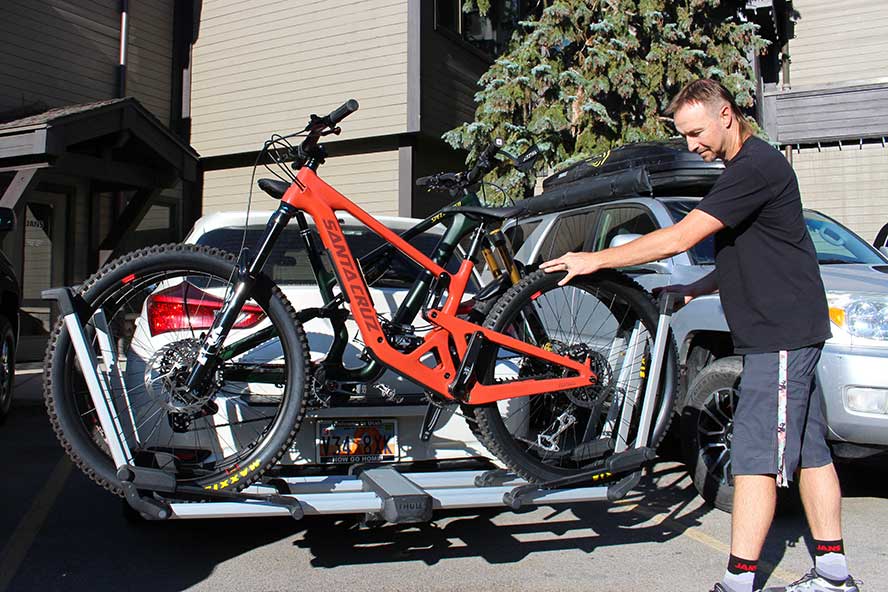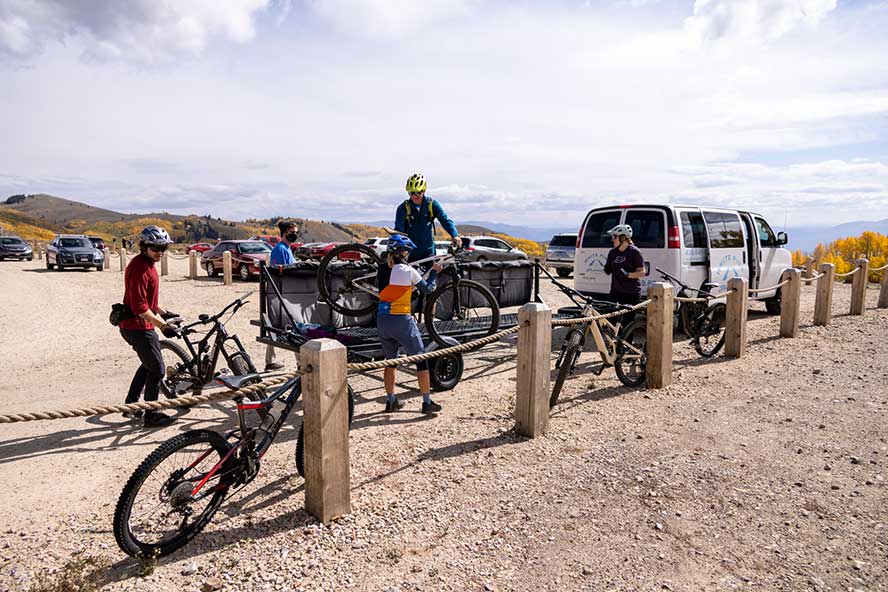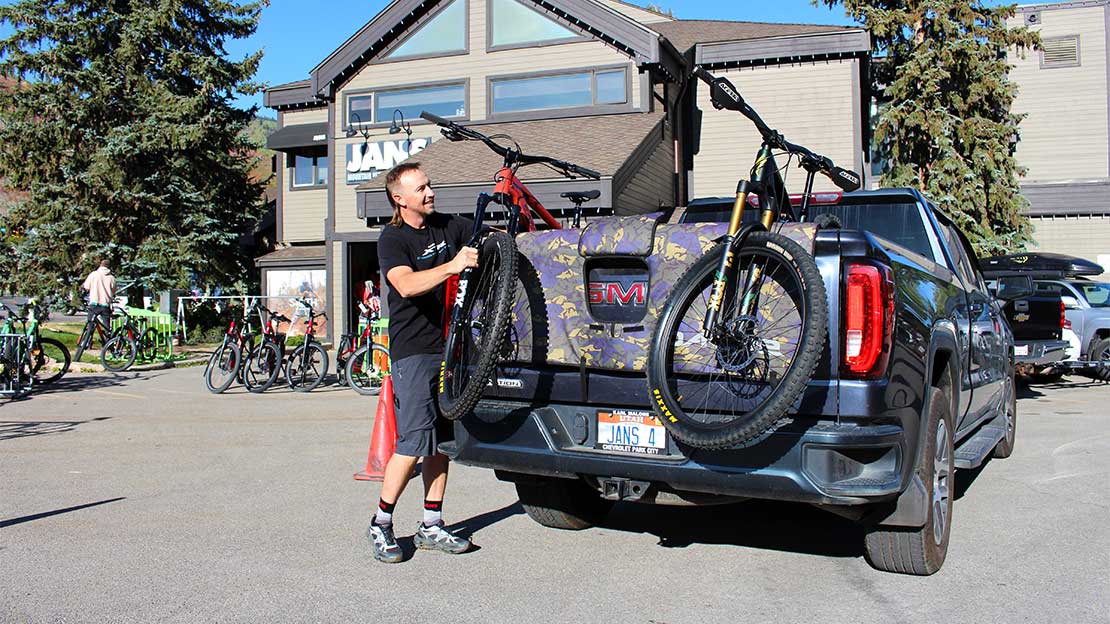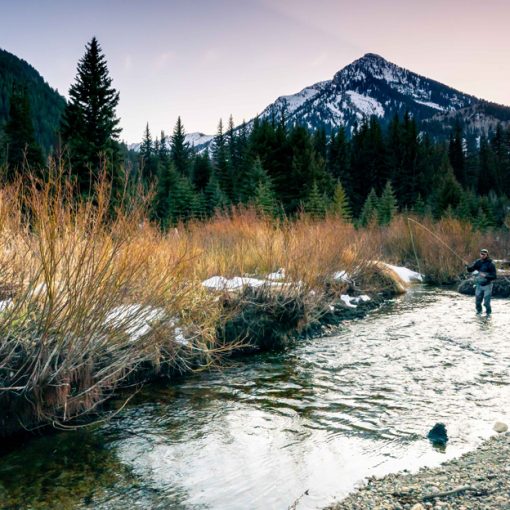Unlike skis, snowshoes, and hiking boots, mountain bikes can be a particularly cumbersome item to travel with. Their shape, size, and weight make them difficult to bring along on road trips and plane rides. However, with numerous transportation options available on the market and new technologies being invented all the time, bringing your bike along is becoming increasingly manageable.
If you love your bike as much as we love ours, odds are you won’t want to leave it behind on your next mountain retreat. So we compiled a list of products and ideas to help transform your bike into your new travel companion.
Travel By Car
The most popular way to transport your bike with your car is by using a bike rack. Whether you’re crossing state lines or just heading to the local trailhead, a bike rack can make transportation easy and convenient. Two common types of racks are roof-mounted and hitch-mounted.
Roof Racks
Pros:
- Works for almost any car.
- No expensive hitch installation required.
Cons:
- Loading can be tricky, especially with taller vehicles.
- Forgetting you have a bike up there.
Roof-mounted racks secure bikes to the top of your car, and many can be paired with theft prevention systems, so your bikes will be safe even when you’re not watching over them. Roof racks can be installed on almost any car model, with larger cars able to accommodate up to three or four bikes. Older racks typically required the removal of the bike’s front wheel for mounting, but many modern racks feature an arm that fits easily over the front wheel to hold it in place.
While roof racks offer excellent security and convenience, they do have one drawback—they place your bike in a vulnerable position for low-clearance parking structures and garage doors. So, if you do mount a roof rack on your car, be aware of what you drive under while carrying bikes.

Hitch Racks
Pros:
- Rack and bikes are quick and easy to take on/off.
- Vehicle clearance (or height) unchanged.
Cons:
- Requires installation of a hitch if you don’t already have one.
- Bikes are exposed to distracted drivers.
Hitch-mounted racks are less universal than roof racks, as they’re only compatible with vehicles that feature a trailer hitch. But what they lack in compatibility, they more than make up for in practicality and ease of use. Hitch racks can easily accommodate up to four bikes, and they have the same structural integrity and security as a roof rack. Hitch racks also don’t change the clearance height of the car, so you never have to worry about bashing your bike when you pull into the garage.
Tailgate Pads
Pros:
- Super easy to load/unload bikes.
- Can hold 4+ bikes at a minimum.
Cons:
- Hidden fees (may require purchase of a pickup).
- Potential for dented/cracked downtubes from driving on rough roads.
If you own a pickup truck, tailgate pads are an excellent option for protecting your vehicle during transport. They offer optimal convenience, as they quickly convert any truck bed into a bike rack. Once installed, the bike is simply placed in the bed with the front wheel hanging over the tailgate. A Velcro strap loops around the downtube to keep the bike from moving or falling out.
Tailgate pads have a durable polyester exterior with foam padding to protect bikes and trucks. Full-size truck pads can carry five or more bikes, while mid-size pads hold at least four. Always measure your tailgate to ensure the pad fits properly.
Tailgate Pads: Convenient, Affordable, but Not Without Considerations
The rise in tailgate pad popularity in recent years can be attributed to its convenience, large bike-carrying capacity, and a relatively affordable price point. A few drawbacks exist, and it is worth noting a few of them. For one, only those with pickup trucks can consider them, which eliminates the option for many riders. Security is also something to consider. Many roof and hitch racks include integrated locks, but with a tailgate pad, you’ll need to find a way to lock the bikes into the bed of your truck if you plan on leaving them unattended.
Also worth mentioning is the potential for damage to the downtube. Many bikes—especially ones with carbon fiber frames—were not designed to absorb impact to the downtube. While the tailgate pad will help cushion impacts from driving over potholes and speed bumps, anyone using a tailgate pad should still be aware of the potential for damage to the frame. That said, many riders have taken carbon fiber bikes on shuttling or extended road trips without receiving so much as a blemish to their bike.

Travel By Plane
If you’re traveling long distances, you may have to fly with or ship your bike. This requires the partial disassembly of your bike, as well as the use of a bike bag.
Bike bags have become increasingly popular in recent years, as more people opt to take their bikes on flights. Most bags require bikes to be partially disassembled to fit; the unpacking and rebuilding process is not especially intensive. In most cases, only the wheels, pedals, seat, and handlebars of the bike need to be removed or adjusted. The rest of the bike can stay intact. Modern bike bags feature ingenious organization and integrated padding, which keep your bike safe in transit.
If checking oversized bags full of bike tools and gear isn’t your idea of a vacation, but you still want to ride on your upcoming trip, consider using a bike shipping service. These are companies that ship boxed bikes to their destinations. They typically offer packing and assembly tips for riders new to the process. Aside from optimizing convenience, this option also eliminates the risk of incurring pricey oversized baggage fees.
By Jans Experts





